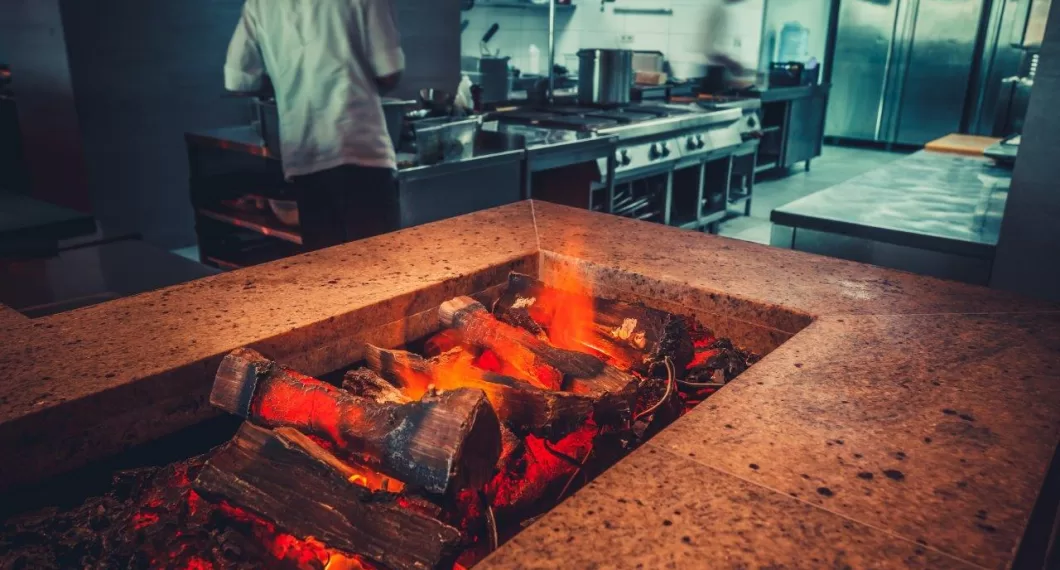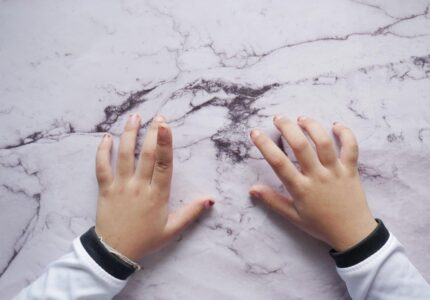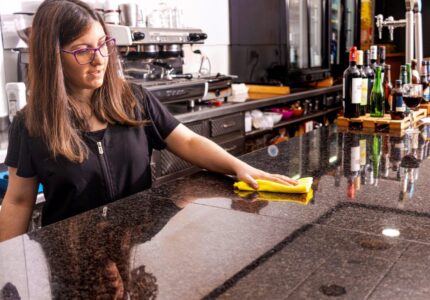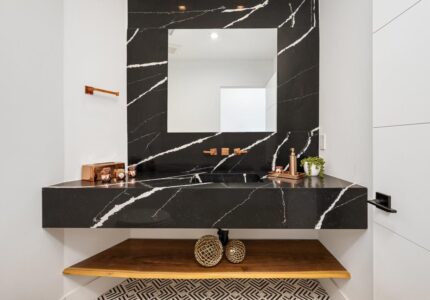What Makes Granite Resistant to Heat?
Imagine you’re cooking a feast, and you need to set down a hot pan quickly. With some surfaces, you’d be scrambling for a trivet. But with granite, you can place that pan directly on the countertop without fear of leaving a scar.
Granite is an igneous rock, born from cooled magma deep beneath the Earth’s surface. This origin story is crucial to understanding its impressive heat tolerance. When magma cools and solidifies under such intense heat, it imparts to granite the ability to withstand similar conditions without damage. Essentially, granite has been forged in nature’s own fiery furnace, making common kitchen or bathroom temperatures a walk in the park for this robust material.
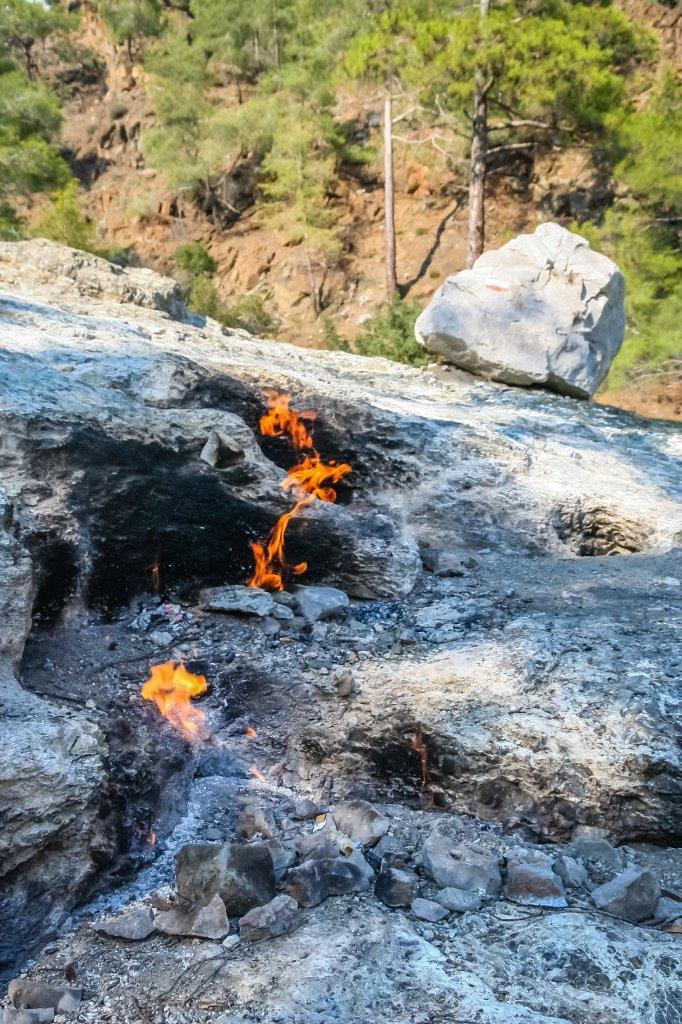
The Science Behind the Heat Resistance
At the microscopic level, granite’s crystalline structure contributes significantly to its heat-resistant properties. The tightly interlocked mineral grains—primarily quartz, mica, and feldspar—allow it to disperse heat very efficiently. This means that when a hot object is placed on a granite surface, the heat doesn’t localize but spreads out quickly, reducing the risk of thermal shock and damage.
Granite’s Reaction to Extreme Temperatures
It’s important to note that while granite is heat resistant, it’s not heat-proof. Extreme temperatures can potentially cause issues. For instance, direct transfer of heat from a searing hot pot might not damage the granite city, but it can weaken the sealant applied for stain protection. Consistent care and routine maintenance ensure that granite retains its majestic look and durability for years.
Why Granite is a Superior Choice in Heat-Prone Areas
Compared to other countertop materials like laminate or even marble, granite stands out for its heat endurance. Laminate can peel or discolor under high temperatures, and marble, though also a rock, can discolor or crack because its metamorphic origins make it less heat tolerant than its igneous cousin, granite.
Where to Use Granite: Ideal Locations and Uses
Kitchens – The Culinary Arena
Kitchens are arguably the most popular domain for granite installations, and for good reason. The ability to withstand heat makes granite an ideal choice for countertops where hot pots and pans are the norms.
Real-Life Application: During a kitchen renovation, a homeowner opted to install a granite island. One evening, while hosting a dinner party, they placed a roasting pan straight from the oven onto the granite island. The guests were amazed that the surface handled the heat without any damage or marks, turning a functional feature into a conversation starter.
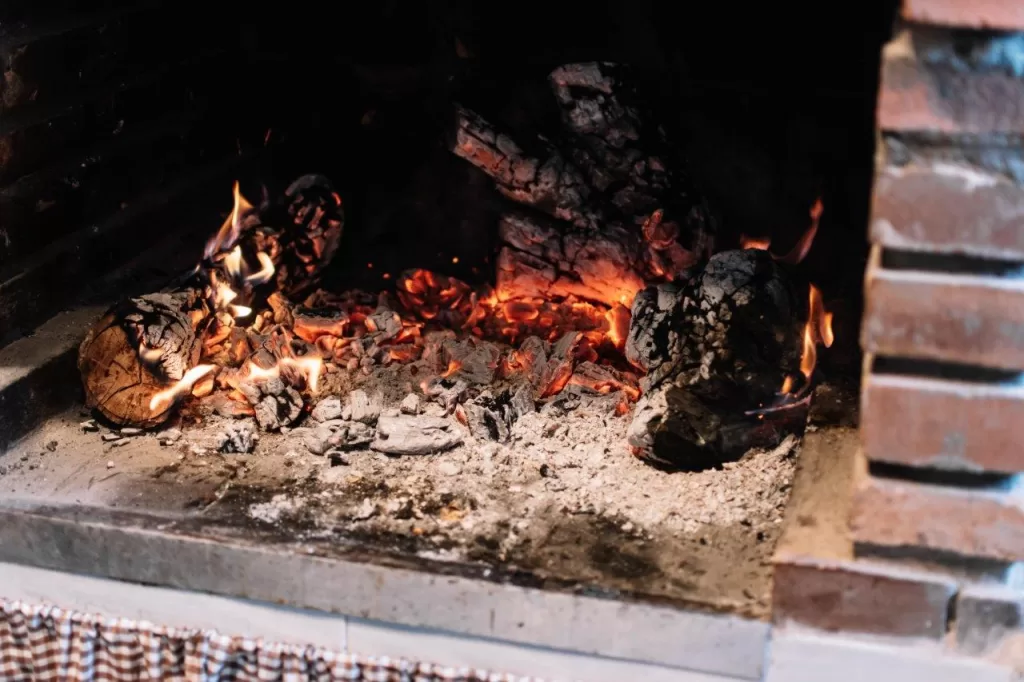
Bathrooms – Elegance Meets Functionality
Bathrooms might not be the first place you think of for heat issues, but the durability and resistance of granite make it a superb choice for vanity tops where hair tools like straighteners and curlers are used.
Example from Experience: A client regularly used her granite-topped vanity as a rest for her curling iron. Unlike other materials that might warp or stain, the granite remained pristine, showcasing its resilience and adding to the bathroom’s overall chic aesthetic.
Outdoor Living Spaces – Beauty That Endures
Granite’s resistance to temperature changes also makes it a fantastic choice for outdoor kitchens and barbecue counters. It stands up well to the high heat of grills and the cold from outdoor weather conditions.
Personal Observation: In one memorable project, granite was used to craft an outdoor kitchen that faced the full brunt of the summer sun and the chill of autumn evenings. Years later, it still stands as robust and stylish as the day it was installed.
Benefits of Using Granite in Heat-Prone Areas
Longevity and Cost-Effectiveness
While the initial cost might be higher than some other materials, granite’s durability means it rarely needs to be replaced. Homeowners save money in the long run by avoiding the need for frequent renovations or repairs due to heat damage.
Low Maintenance
Beyond its heat resistance, granite is also celebrated for its ease of maintenance. Regular sealing helps maintain its resistance and beauty, but day-to-day, it only requires simple cleaning with mild soap and water.
Tip from the Field: Always use trivets and pads under extremely hot items if possible, not just to protect the granite but also to prolong the life of the sealant that keeps the granite pristine.
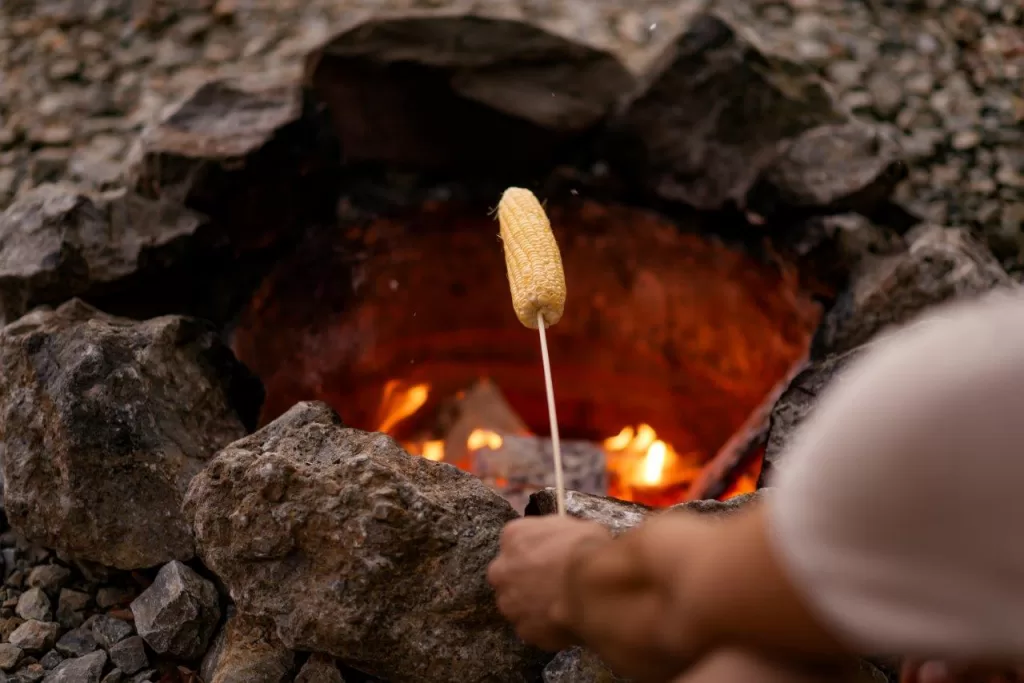
Aesthetic Value
Granite not only adds functional value but also aesthetic appeal to any space. Its natural patterns and color variations can complement any décor style, enhancing the overall look of the room.
Decorator’s Note: I often recommend lighter colored granites for smaller spaces as they can make the area appear larger while still bringing the heat-resistant benefits.
Conclusion: Granite – A Versatile and Durable Choice
In conclusion, granite’s ability to resist heat is matched by its versatility and beauty, making it a top choice for areas where both durability and aesthetics are important. Whether it’s in a high-traffic kitchen, a stylish bathroom, or an outdoor entertainment area, granite stands up to the challenge, proving that practicality and elegance can go hand in hand.
Remember, investing in granite is not just about choosing a material that looks good. It’s about making a smart decision for a surface that will face the heat and still look magnificent through the years. As a fabricator with over two decades in the business, I can say with confidence that granite is a cornerstone of quality in any heat-prone environment.

